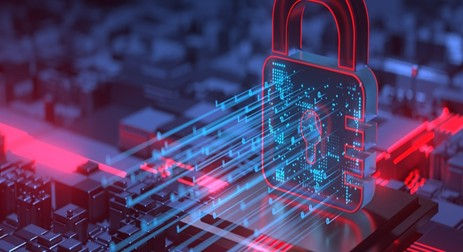Space Cybersecurity: Protecting Satellites from Hackers and Cosmic Threats
- Minakshi DEBNATH

- May 17
- 3 min read
MINAKSHI DEBNATH | DATE: APRIL 22,2025

Introduction
In an era when the digital and orbital realms are more interconnected than ever, space cybersecurity has emerged as a critical priority. Satellites are vital to global communications, navigation, scientific research, and national security. However, their increasing dependence on digital infrastructure makes them susceptible not only to natural space hazards but also to a rising tide of cyberattacks. This article explores the risks facing orbital infrastructure and how artificial intelligence (AI) is transforming defense mechanisms to secure space assets.
The Rising Risks to Orbital Infrastructure

Satellites orbiting Earth are no longer isolated systems but are interconnected through complex networks and ground control stations. This connectivity, while essential, also introduces vulnerabilities. Key risks include:
Cyber Intrusions and Hijacking
Malicious actors can infiltrate satellite systems to steal data, disrupt communications, or even take over control. Such attacks can involve spoofing signals, injecting malicious commands, or jamming transmissions. One notable concern is attackers gaining access to satellite command and control (C2) systems, which could allow them to reposition satellites, disable them, or even crash them into other space objects.
Signal Jamming and Spoofing
Signal interference remains a major threat. Jamming disrupts satellite communications by overwhelming them with noise, while spoofing sends fake signals that deceive navigation systems—jeopardizing everything from military operations to commercial flights.
Software Vulnerabilities
Much like terrestrial systems, satellites rely heavily on embedded software. These systems may contain outdated components, hardcoded credentials, or unpatched vulnerabilities, making them easy targets for attackers.
Ground Station Attacks
Often overlooked, ground control stations form a critical part of the satellite ecosystem. Attacks on these facilities can lead to disruptions in satellite operations or unauthorized data access, effectively turning the satellites themselves into tools of cyber warfare.
Cosmic Threats: Natural Hazards in Orbit

Beyond human-made threats, satellites face numerous environmental dangers:
Solar Flares and Electromagnetic Pulses (EMPs)
These natural phenomena can damage satellite electronics or disrupt signal transmission.
Space Debris
Collisions with orbital debris can physically damage or destroy satellites, causing cascading failures across orbital infrastructure.
While these threats aren’t cybersecurity issues per se, the distinction blurs when satellites fail to report accurate data or get knocked offline, creating exploitable opportunities for cyber attackers.
AI-Driven Cyber Defense Mechanisms
Artificial intelligence is playing an increasingly pivotal role in defending space assets. Here's how AI is reshaping cybersecurity in orbit:
Autonomous Threat Detection
AI models can analyze satellite telemetry and communication patterns in real time, identifying anomalies such as unauthorized access or abnormal system behavior.
Decentralized Security through Mesh Networks
Some next-generation satellites operate in mesh networks where each unit can validate commands via peer satellites. AI algorithms help ensure that only legitimate instructions are accepted, using consensus models to block suspicious signals.
Predictive Risk Analysis
Machine learning systems assess historical data and threat intelligence to predict likely attack vectors or failure scenarios, allowing for proactive patching or system reconfiguration.

Post-Quantum Encryption
AI is also being used to test and implement post-quantum cryptographic protocols that can withstand future threats posed by quantum computers.
International Collaboration and Policy Challenges
Securing space assets requires more than just technical solutions—it demands coordinated global policy. While many nations have begun forming space cyber commands, there's a lack of standardized frameworks for cyber norms in space. Entities like NATO and the United Nations have urged for multilateral cooperation, yet legal and jurisdictional ambiguities persist.
Conclusion
As reliance on satellites grows across sectors, from weather forecasting and GPS to military reconnaissance and financial systems, the imperative to secure orbital infrastructure intensifies. AI-powered defense tools are proving indispensable in this fight, helping to detect, mitigate, and respond to both cyber and cosmic threats in real time. The future of space cybersecurity lies in integrating advanced technology with proactive policy—and ensuring that every new satellite launched is as secure as it is innovative.
Citation/References:
eccuedu. (2025, February 24). The future of Cybersecurity in Space: Securing satellites and space missions. Eccuedu. https://www.eccu.edu/blog/the-future-of-cybersecurity-in-space-securing-satellites-and-space-missions/
(28) Space Cyber Warfare: How hackers could target satellites and space infrastructure. | LinkedIn. (2024, November 20). https://www.linkedin.com/pulse/space-cyber-warfare-how-hackers-could-target-satellites-verma-bhpcc/
Khan, S. K., Shiwakoti, N., Diro, A., Molla, A., Gondal, I., & Warren, M. (2024). Space cybersecurity challenges, mitigation techniques, anticipated readiness, and future directions. International Journal of Critical Infrastructure Protection, 47, 100724. https://doi.org/10.1016/j.ijcip.2024.100724
Robinson, R. (2025, April 4). ENISA report warns of rising cyber risks to orbital infrastructure. ComplexDiscovery. https://complexdiscovery.com/enisa-report-warns-of-rising-cyber-risks-to-orbital-infrastructure/
Oloyede, J. (2024). AI-Driven Cybersecurity Solutions: Enhancing defense mechanisms in the Digital Era. SSRN Electronic Journal. https://doi.org/10.2139/ssrn.4976103
Image Citations
(28) Cybersecurity of Space Systems | LinkedIn. (2024, February 24). https://www.linkedin.com/pulse/cybersecurity-space-systems-chuck-brooks-i0c3e/
IEEEadmin. (2023, May 8). Cybersecurity in orbit: The growing vulnerability of space-based systems - IEEE transmitter. IEEE Transmitter. https://transmitter.ieee.org/cybersecurity-in-orbit-the-growing-vulnerability-of-space-based-systems/
𝑺𝙃𝑬𝙇𝑳𝙀𝒀�. (2024, November 23). Cosmic Rays and Bitrot: The Silent Threat from Space to HDDs on Earth. Medium. https://medium.com/h7w/the-silent-threat-from-space-to-hdds-on-earth-cosmic-rays-and-bitrot-3b33a5a6be62
Chandolu, D. W. (2024, August 31). Artificial intelligence and cybersecurity: a new era of defense. Cyber Defense Magazine. https://www.cyberdefensemagazine.com/artificial-intelligence-and-cybersecurity-a-new-era-of-defense/





Kommentare